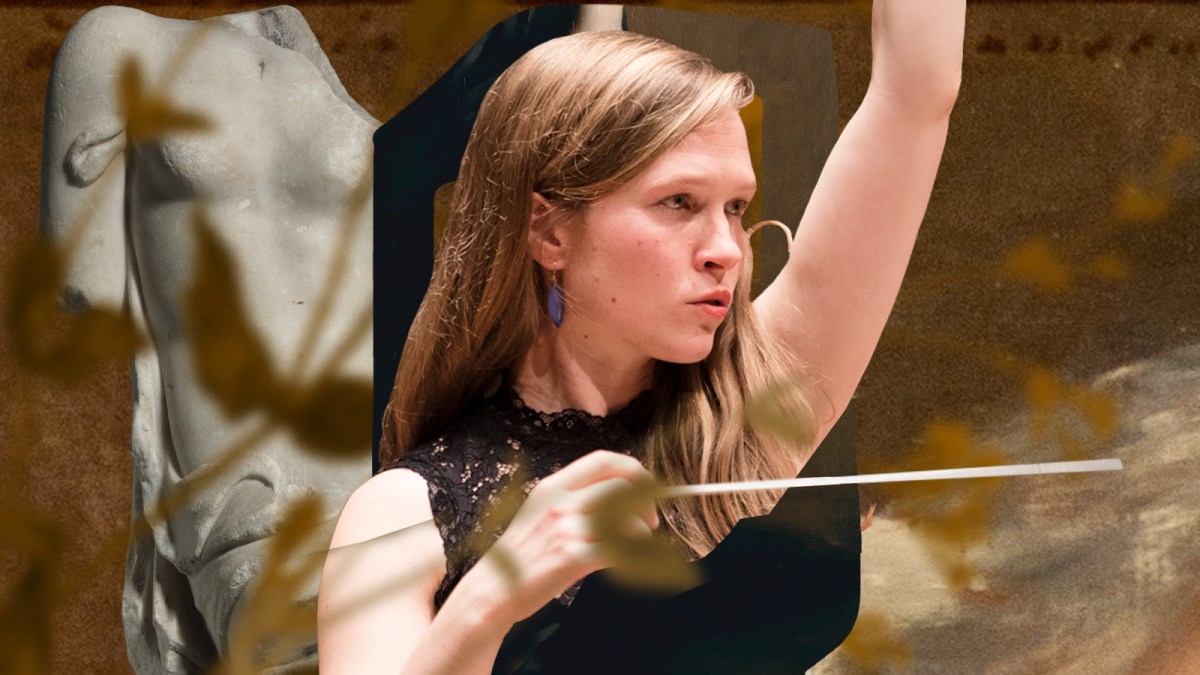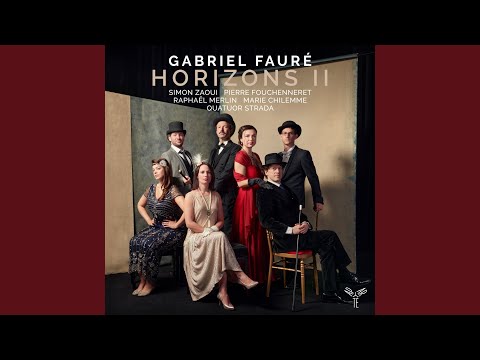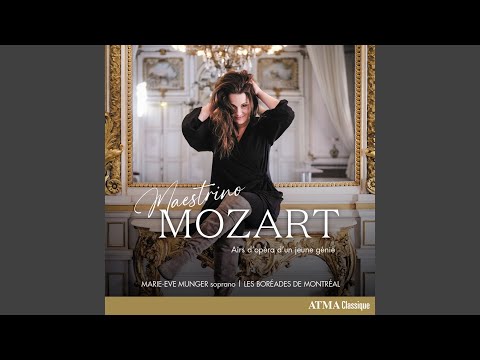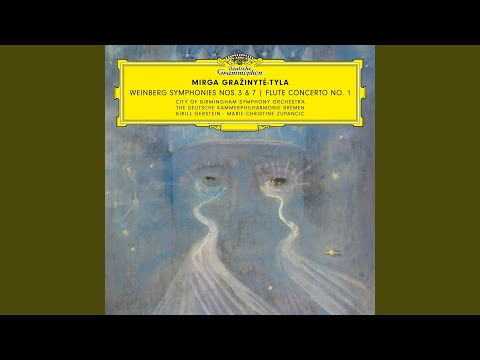- Simon Zaoui, Pierre Fouchenneret, Raphaël Merlin, Marie Chilemme, and Quatuor Strada: “Gabriel Fauré: Horizons II” (Aparté)
- Marie-Eve Munger, Les Boréades de Montréal, Philippe Bourque: “Maestrino Mozart” (ATMA Classique)
- Mirga Gražinytė-Tyla, City of Birmingham Symphony Orchestra, Deutsche Kammerphilharmonie Bremen, Kirill Gerstein, Marie-Christine Zupancic: “Mieczysław Weinberg: Symphonies Nos. 3 & 7, Flute Concerto No. 1” (Deutsche Grammophon)
Having read my fair share of Grove entries over the years, I’ve come across a number of gems in terms of biographical notes, musical analysis, and parentheticals. Among the most poetically batshit lines, however, is this one from Gabriel Fauré’s entry (by biographer Jean-Michel Nectoux):
On 27 March 1883 he married Marie Fremiet, the daughter of a highly regarded sculptor. Although he always retained great affection for his wife, her withdrawn, bitter and difficult character, coupled with his keen sensuality and desire to please, explain his infidelities.
“Her withdrawn, bitter and difficult character”! “Keen sensuality and desire to please”! “Explain”! How much would it cost to commission a book-length essay from Annie Ernaux deconstructing these 42 words? Contrast this as well with Nectoux’s note on Fauré’s engagement—before his marriage to Fremiet—to Marianne Viardot (daughter of Pauline). Having accepted Fauré’s proposal in July 1877, Viardot broke things off three months later. Nectoux writes of the decision that “the girl…felt only affection mixed with fear for her fiancé.” With no further elaboration on this odd combination of emotions, the reader is left with the musicological equivalent of blue balls.
The latest from VAN, delivered straight to your inbox
During this time, Fauré wrote some of the key works of his early period, including his Piano Quartet No. 1 in C Minor, which he began towards the end of his engagement to Viardot. A decade later, after premiering his Piano Quartet No. 2, Fauré would describe being “haunted” by an idea for another piano-string work (which would eventually become his first Piano Quintet), but that sense of haunting had already begun with his First Piano Quartet. An autumnal opening echoes Brahms’s string sextets and shows flashes of the curves and angles of later Bartók quartets. It’s sensual (perhaps keenly so), but it’s also a bit unsettling; the texture of something that’s already become a ghost.
On the second of a two-part recording series devoted to Fauré’s chamber music, pianist Simon Zaoui, violinist Pierre Fouchenneret, and cellist Raphaël Merlin—along with violist Marie Chilemme and Fouchenneret’s fellow Quatuor Strada colleagues—give a uniformly hypnotic reading of Fauré’s two Piano Quartets and Quintets, along with his String Quartet in E Minor. They evoke the aura of the salon society to which Fauré belonged, one which allowed artistic influences from friends like John Singer Sargent to Marcel Proust to flow in and out of his orbit (while also contributing to his catalog of music—and infidelities). Their sense of easy rapport makes the works shine, with colors echoing the warm glows of Sargent: foundations of fertile realism matched with a phantasmal shade of impressionism. Each movement’s themes are easy to discern, but they feather out into the ether. (Sargent would later paint Fauré’s portrait, bringing things full circle.)
Many of Mozart’s operas subvert the notion of coming full circle. After the trysts and tribulations of the two central couples in “Così fan tutte,” we end with the same pairs that we saw in the beginning—though perhaps a little more wise and a little less happy. Viewed from the vantage point of Zerlina and Masetto, the plot of “Don Giovanni” is an interlude bookended by their wedding ceremony and dinner.
Similarly, after seeing soprano Marie-Eve Munger in Gotham Chamber Opera’s delicious revival of “Il sogno di Scipione” in 2012, I now, a full decade later, find myself once again listening to Munger sing Costanza’s aria, “Biancheggia in mar lo scoglio,” navigating the virtuosic fireworks of the 15-year-old Mozart in a philosophically-rooted opera that’s light on plot but heavy on vocal acrobatics. In that time, Munger’s soprano has bloomed and taken on added shades and allure. As the goddess of constancy, what sounded in 2012 like a virtuous, creamy tone has gained some heat and body—the switch from a virginal bridal gown to Lana Turner’s wardrobe in “The Postman Always Rings Twice.”
“Biancheggia” is the first of a dozen arias from Mozart’s early works that Munger explores alongside conductor Philippe Bourque and the ensemble Les Boréades de Montréal, treating them not as second-tier, early drafts of the composer’s late-period operatic genius, but firm contenders in their own right. Rosina’s “Amoretti che ascosi” from “La finta semplice” (written by a 12-year-old Wolfgang) opens with a rippling rhythm not too far off from the trio from “Così,” “Soave sia il vento.” Written one year earlier for the archbishop of Salzburg, “Ein ergrimmter Löwe brüllet” from “Die Schuldigkeit des ersten Gebot” hints at the leonine coloratura he would lend to Donna Anna’s own moments under the responsibility of the first commandment in “Don Giovanni,” 20 years later. There’s never a dearth of Mozart recital albums, but Munger’s is a winning combination of curatorial intelligence and artistic conviction.
It’s odd to hear Mieczysław Weinberg and think of Mozart; listening to Gidon Kremer’s recording of Weinberg’s violin sonatas earlier this year, that was the least likely pairing on my list. But the Warsaw-born, Soviet-persecuted composer’s Symphony No. 7 opens with a harpsichord solo that could pass for a radical recitative out of something like Teodor Currentzis’s cycle of the Mozart-Da Ponte operas. It’s a muted and quiet opening gambit; at times soloist Kirill Gerstein is barely audible. But it’s the foundation of the first movement, a melody that the strings replicate and build on to evoke a haunting landscape that exists in the same zip code as Prokofiev’s “The Field of the Dead.” The harpsichord quickly fades into the background but, like incense, it leaves a scent that lingers across the length of the symphony even when it’s invisible.
Conductor Mirga Gražinytė-Tyla isn’t the first to dedicate multiple recordings to Weinberg’s orchestral works. Much credit there goes to Thord Svedlund and the Gothenburg Symphony Orchestra, whose series for Chandos led to many world-premiere recordings of works that Gražinytė-Tyla now revisits with the Deutsche Kammerphilharmonie (Symphony No. 7) and the City of Birmingham Symphony Orchestra (Symphony No. 3 and Flute Concerto No. 1). But the young Lithuanian conductor’s contribution is also significant. Offering another vantage point on these works through her multi-album recording series for Deutsche Grammophon allows for a more multi-dimensional read on Weinberg’s symphonies and concertos.
And he’s a composer well-suited to having multiple reads and interpretations. Alongside the luxury casting of Gerstein on the Seventh, Marie-Christine Zupancic delivers coloratura-level flute passages in the high-octane opening of Weinberg’s Flute Concerto No. 1. In the second movement, she mirrors the moody and murky harpsichord lines, before transitioning to a dreamy finale, blending classic klezmer with a hazy sensuality somewhere between Bartók and Debussy. That haziness in particular suits Weinberg’s texture; keen sensuality would simply be overkill. ¶
Subscribers keep VAN running!
VAN is proud to be an independent classical music magazine thanks to our subscribers. For just over 10 cents a day, you can enjoy unlimited access to over 875 articles in our archives—and get new ones delivered straight to your inbox each week.
Not ready to commit to a full year?
You can test-drive VAN for one month for the price of a coffee.




